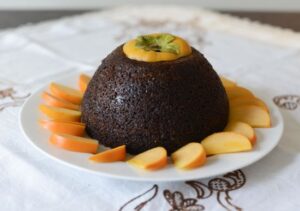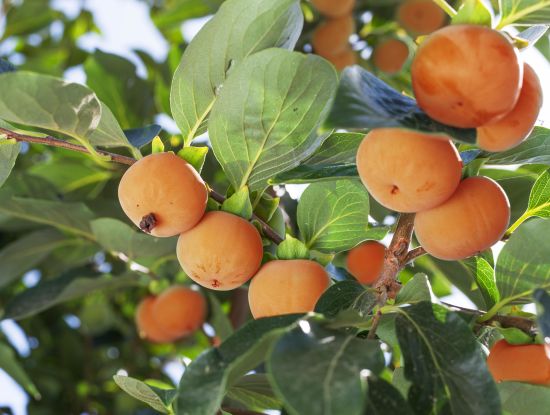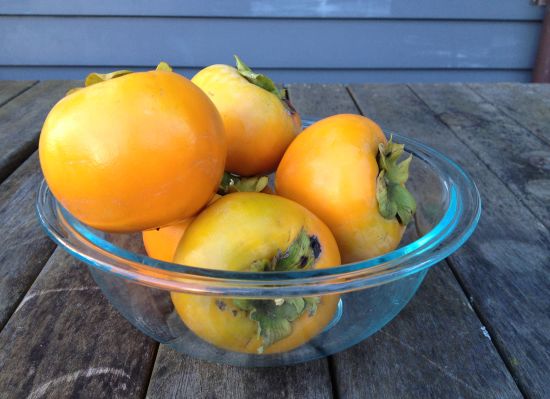
The Persimmon is a deciduous tree, native to China and belongs to the Ebony or Ebenaceae family.
It can grow to 5 metres but more commonly 3 to 4 metres in height.
Persimmons were introduced to New Zealand before the turn of the century. Early imports were mainly astringent types like Hachiya for use as ornamental trees in the home garden.

Persimmons are harvested over the late summer and autumn months – mid March to May. Fruit reach full maturity when they turn orange. Non-astringent persimmons have a shelf life of 20-30 days after harvest.
Astringent varieties have fruit that looks great but is largely inedible. The astringency is caused by high level of soluble tannins in the fruit flesh. Then very quickly the fruit transforms into a red pulpy flesh that is sweet and delicious. This stage only lasts for a few days before it rots.
During the late 1970’s there were a number of imports of non-astringent types, in particular the variety called Fuyu. This is the persimmon we know most commonly today and is usually eaten crunchy like an apple, but like its astringent cousin it can be left till more ripe when the taste and texture become sweet and syrupy.
Persimmons require a long growing season (7 months) to mature fruit. This limits the fruit to warm northern regions in New Zealand. Shelter from cold spring winds is required to ensure adequate leaf and shoot growth to support fruit. Trees should be planted in full sun.
Persimmons will grow in a wide range of soil types, but always do best in deep loam type soils. Persimmons require regular and adequate water from fruit set until the start of colouring. This will keep fruit drop to a minimum.

Fruit are borne on new wood which is only formed on the terminal buds of last year’s growth. To ensure fruiting wood remains, prune half of the tree back hard in winter leaving some of last season’s growth. Good fruiting shoots are approximately 2 to 40 cm long with large buds near the tip.
Leaf-roller and mealy bug are the main pests associated with persimmon. Organic sprays such as Summer Oil and Bacillus Thuringiensis can control these pests in the home garden.
Apply a complete fertiliser like Natures Organic Fertiliser in late winter and again in early summer.
Birds love persimmons so trees may need to be netted.
Website designed by www.thecornerstorecollective.com
Developed by Richard Hpa